Tangtong Gyelpo Temple is a Gelug Pa monastery of Tibetan Buddhism.
It is located at the foot of Yaowang (Medicine King) Mountain , next to Dralha Luphu Monastery.
To reach this Temple, departing from Beijing East Road, and the large white stupa in front Potala Palace, it is less than 200 meters away from the Potala Palace.

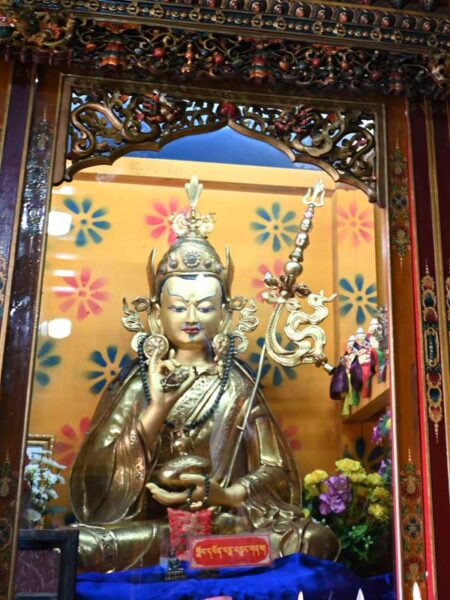
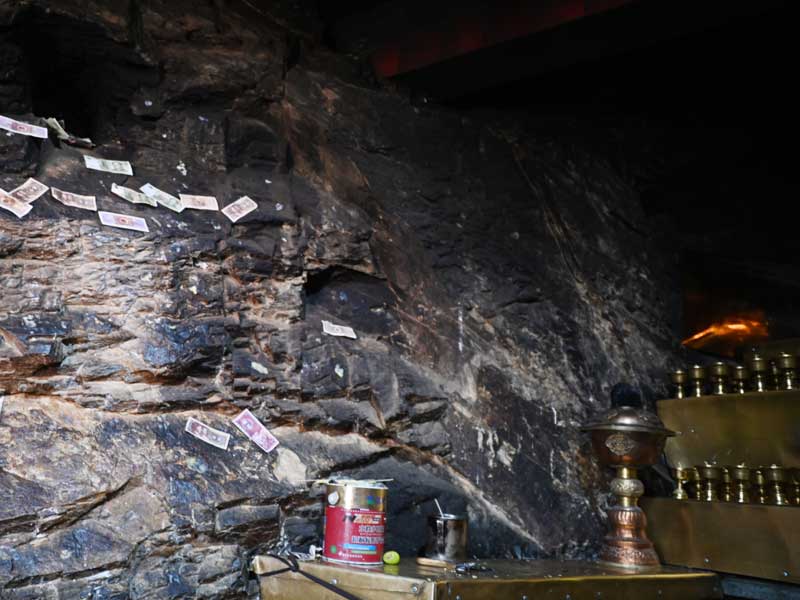
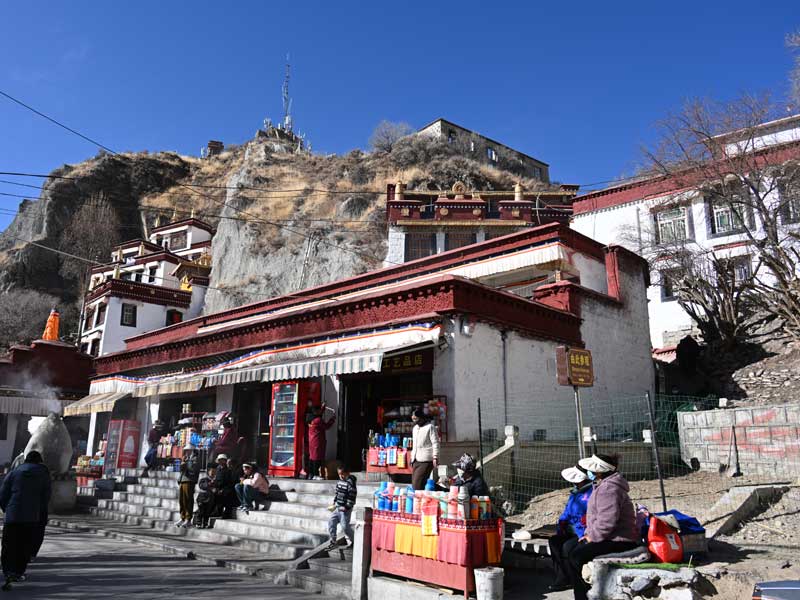
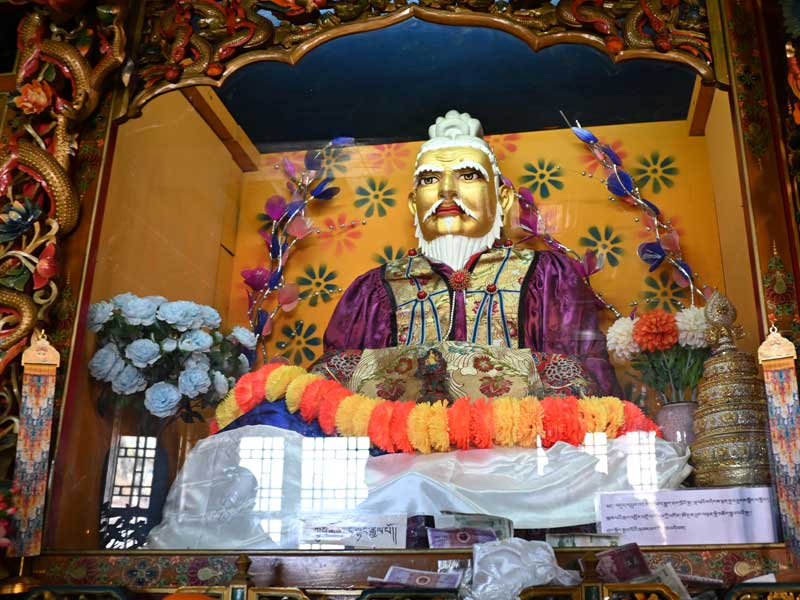
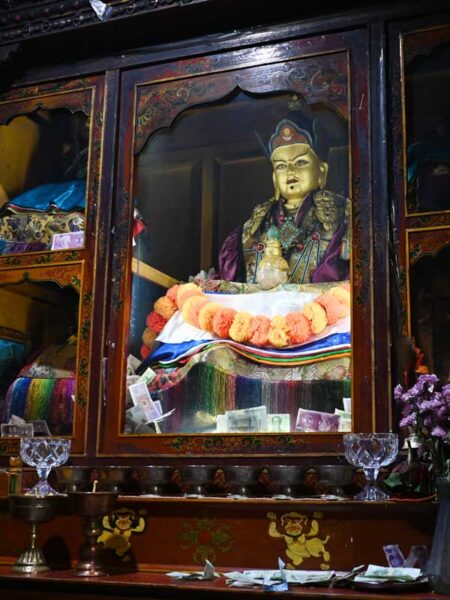
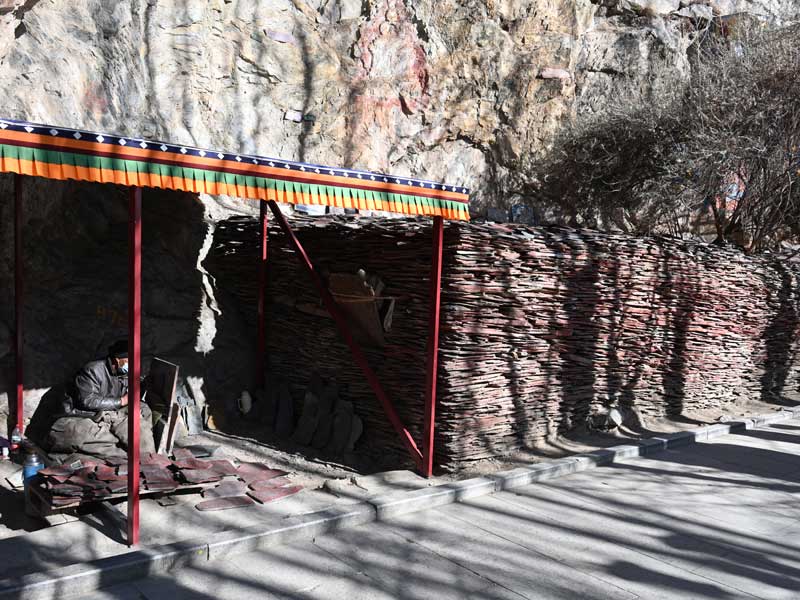
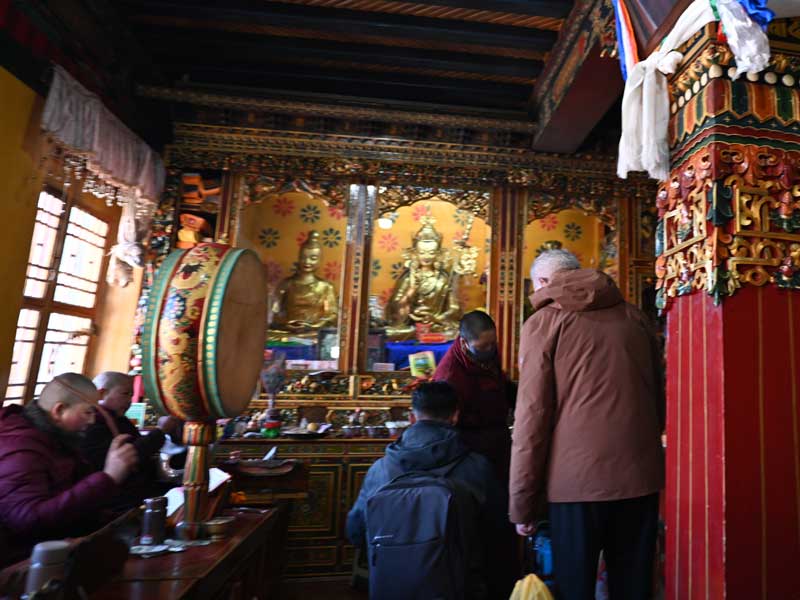
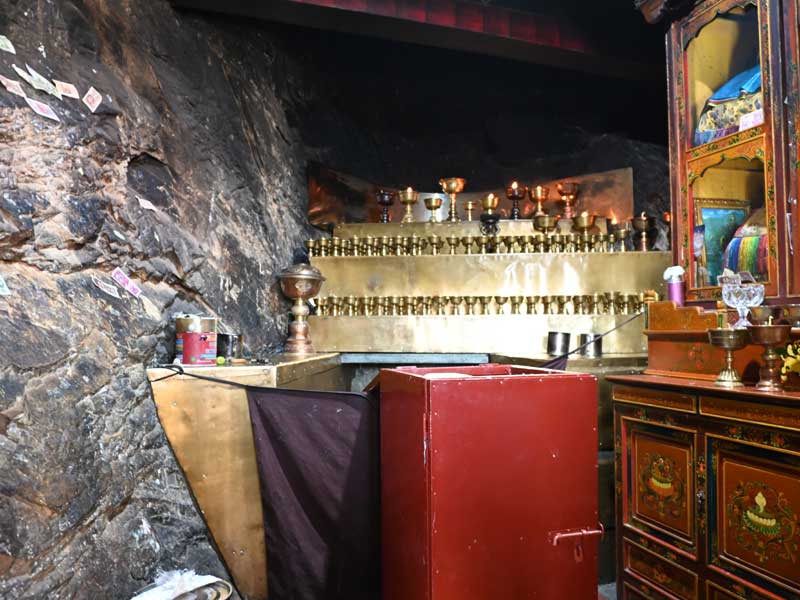
Overview
This small temple at the foot of Yaowang Mountain was not originally built to honor Tangtong Gyelpo. It was established by Tangtong Gyelpo himself and originally dedicated to Amitayus and the Three Protectors (Avalokitesvara, Manjusri and Vajrapani).
Later, the temple began to house a statue of Tangtong Gyelpo. It is now managed by a few nuns.
Tangtong Gyelpo is depicted as an elderly man with long white hair and a joyful expression.
The central statue in the temple represents this image of Tangtong Gyelpo. A similar statue can also be seen on the southeast corner of the Red Hill, where the Potala Palace is located, visible to passersby on Beijing Road.
Tangtong Gyelpo was an architect, engineer, blacksmith, and doctor for the Phagmo drupa regime, as well as a monk of the Kagyu Pa of Tibetan Buddhism and the founder of Tibetan opera.
He believed that monks should actively engage in the world to alleviate suffering and thus traveled extensively, constructing dozens of iron bridges and over a hundred monasteries across Tibet.
He is revered as the “Iron Bridge Lama” (“Chakzam Trülku” in Tibetan).
Tangtong Gyelpo
Tangtong Gyelpo (1385 AD – 1464 AD) was a contemporary of Tsongkhapa.
He was born in Ngamring in Western Tibet, originally named Tsögye Dagtsen. Coming from a poor family, he later became a monk, receiving the novice name Tsöndrü Zangpo. Initially a follower of the Nyingma tradition, he later joined the Shamb Kagyu (a branch of the Kagyu tradition).
A learned and thoughtful scholar, he studied both exoteric and esoteric Buddhist teachings and became a respected scholar, earning the name “Tangtong Gyelpo”, meaning “King of the Open Plains.”
In the early 15th century, with the help of local leaders and officials, Tangtong Gyelpo raised funds and constructed the Chushul Iron Chain Bridge in 1430 AD.
He also formed a performing troupe known as the “Seven Sisters of Bena” to raise money for bridge construction through performances. Over the years, he organized the building of 58 iron chain bridges across various regions.
Unfortunately, most of these bridges were destroyed due to wars in Tibet, particularly during the early 18th century when the Dzungar Mongols invaded.
In the mid-15th century, Tangtong Gyelpo also played a crucial role in transitioning Cham dances to Tibetan opera. He combined elements of Buddhist scriptures, folk tales, and mythological stories into a performance art form known as “Lama Mani.” This form of storytelling involved displaying scroll paintings and narrating the stories depicted.
Lama Mani
This is a Tibetan storytelling genre popular in Lhasa, Shigatse, and Shannan. “Lama” means monk, and “Mani” means chanting. However, “Lama Mani” as an art form involves more than just chanting. Performers use a stick to point at the scroll paintings while narrating the story. Traditional stories include Tibetan historical tales such as “Princess Wencheng” and “Langsa Girl.”
Tangtong Gyelpo also incorporated other Tibetan song and dance forms, emphasizing character portrayal, leading to the development of the “Blue Mask Tibetan Opera,” the precursor to modern Tibetan opera. Thus, he is honored as the founding father of Tibetan opera. Many Tibetan opera performers refer to themselves as “Descendants of Tangtong” (Tangtong Boru in Tibetan).
In his hometown of Ngamring, as well as in Lhatse and Sagya, people still practice a traditional ceremony to honor Tangtong Gyelpo. They rub oil and wool on iron chains to preserve the bridges he built. Many temples in Tibet also have images or statues of Tangtong Gyelpo, depicted as a kindly old man with white hair and a peaceful expression, holding an iron chain.



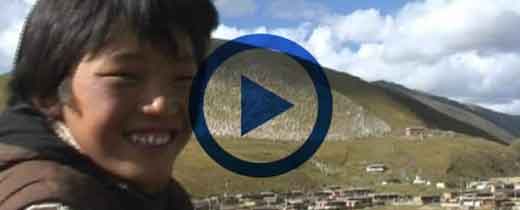

Leave a Reply